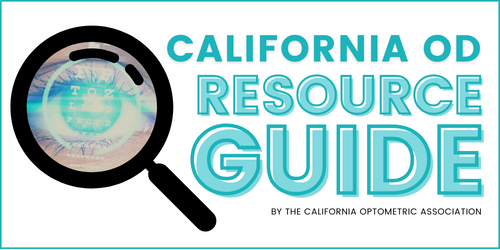School vision screenings legislation – AB 1840 and SB 1172 (2014)
.png)
|
New laws that took effect in January 2015 revise how school vision screenings must be done in California. Although the new laws require the Department of Education (DOE) to draft standards that schools must follow, those standards are not yet developed and school vision screenings are beginning soon. Schools have been left “on their own” to interpret the new law and ensure their screenings are compliant. Details of the legislation: Below is a summary of the main provisions of the new law:
Background on photoscreeners (American Academy of Pediatrics): In its study entitled Use of Photoscreening for Children’s Vision Screening, the American Academy of Pediatrics describes ”photoscreening” as a vision screening technique used to screen for amblyogenic factors, such as strabismus, media opacities, and significant refractive errors, in one or both eyes in children.5,6 Photoscreening has the potential to increase the currently low screening rates. Using a camera or video system appropriately equipped for photoscreening, images of the pupillary reflexes (reflections) and red reflexes (Brückner test) are obtained.7 Other than having to fixate on the appropriate target long enough for the photoscreening, little cooperation is needed from the child. Data are then analyzed by the evaluator, reviewing center, or computer for amblyogenic factors and positive findings are noted. Children who do not pass the test may be referred for a complete eye examination. As a technique to screen for amblyogenic risk factors, photoscreening appears to offer certain conveniences and advantages over traditional methods of vision screening, especially in its availability to screen children who are the most difficult to screen but in whom the prevalence of amblyopia is higher than in the general pediatric population. This includes children at high risk for eye problems, such as premature infants or children with developmental delays or a family history of eye problems. Photoscreening does not represent a single technique or piece of equipment. Different optical systems can be used for photoscreening. Interpretation of screened images may be performed onsite or offsite in a reading center or with an automated system. Each photoscreening system may have its own advantages and disadvantages, and it appears that results published in the literature for one system are not necessarily valid for others. Studies performed by different investigators using the same photoscreening apparatus may yield a wide range of results in sensitivity, specificity, and predictive values when onsite interpretation is required.8–15 Likewise, it is not certain that data gathered about different groups of children or different settings can be extrapolated to other groups or settings. In general, it is difficult to compare efficacies of various vision screening methods, such as stereoacuity testing, autorefraction, red reflex testing, and cover testing, and then determine if photoscreening has better positive and negative predictive values. This is attributable in part to lack of uniformity in pass-fail criteria for significant refractive errors. More research is needed to establish how photoscreening can be best used. Photoscreening offers hope in improving vision screening rates in infants, preverbal children, and those with developmental delays who are the most difficult to screen. Photoscreening has not been shown to be superior to other vision screening tests currently used to screen four- to five-year-olds. In older children, currently available vision screening techniques can be used reliably. COA, representing the experts in the field of children's vision and vision development, recommend a thorough eye and vision examination be performed by an eye care professional before the age of one year and prior to a child starting school. COA believes vision screenings performed by non-eye care professionals have a long history of failing to detect a significant number of children with eye and vision problems requiring further eye and vision care. The vision screening model has for far too long been an injustice to children's development and children's learning readiness and, therefore, should be replaced by a comprehensive eye exam model performed by eye care professionals. Questions or concerns should be directed to Kristine Shultz via email or 916.266.5027. |
1.png)

1.png)



.png)




.png)
.png)
.png)
.jpg)
.png)

.png)
.png)
.png)
.png)
.png)

.png)

.png)
.png)
